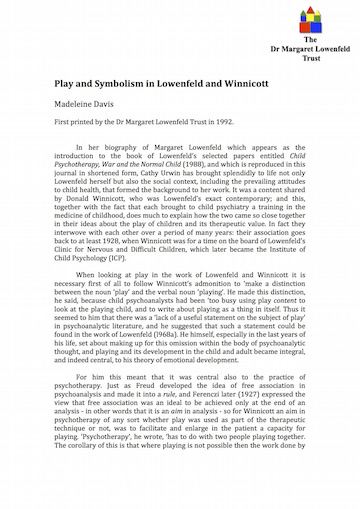Lowenfeld Mosaics
This paper by Thérèse Woodcock, Consultant Child and Adolescent Psychotherapist and Trainer in Lowenfeld Projective Play Therapy, delivered at a Cambridge conference and published originally in the British Journal of Projective Psychology describes briefly how to use Mosaics in psychotherapy and gives several illustrated case histories. Download paper as PDF file
The use of the Lowenfeld Mosaics in Child Psychotherapy
The Lowenfeld Mosaics were first introduced over fifty years ago; since then a great deal of research has been conducted into its possible uses. Besides its continued use at Dr. Lowenfeld’s Institute of Child Psychology before its closure, workers from all over the world have employed this Test; anthropologists in cultural and cross-cultural studies; psychologists in the study of normal children and adults as well as mental defect; psychiatrists for differential diagnosis and the study of mental disorder. This paper is confined to one use of the Lowenfeld Mosaics, namely as a communication tool in the diagnosis and psychotherapeutic treatment of children.
Administrative Procedure; The mosaic pieces are laid out ready for use in a box, grouped by shape and displaying all the colours in each shape. There are five shapes, all bearing a mathematical relation to each other (Figure I). The basic shape is a square from which the isosceles, equilateral and scalene triangles are derived: the sides of the diamond are the same length as the square (30mm). Each shape is available in red, blue, yellow, black, green and white and arranged in the box in this order. This box is presented to the child alongside a Tray (filled with plain white paper) whose dimensions were chosen so that complete edged patterns could be made with certain shapes and the Tray could be entirely covered, though this is very difficult to achieve satisfactorily.

